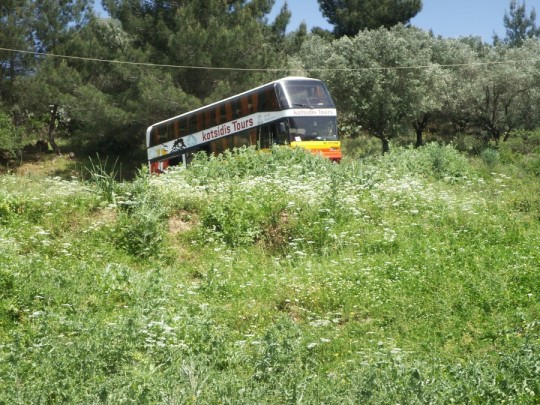
The ancient theater trip back in 2008:
The ancient theater at Stratos, in Aitolοakarnania (Western Greece). Α memorable visit, since our bus almost toppled down a hill. The next, and last theater we visited was at Dodoni, so everyone was pretty tired, only a handful left the bus to visit this one- which was quite an adventurous exploit because you have to climb down the hill to get to it and the grass is full of snakes this time of year, well the snakes are pretty harmless, but they can give you a nasty scare. That’s also why we didn’t get to see the theater at Orchomenos- because it was infested with vipers according to the guard. Every year the municipalities have to supply archaeological sites like this with snake repellents and trim the weeds, but towns with a lack of funds don’t do it, and as a result minor sites stay closed.
Anyway when we returned happy and refreshed-it was really nice and cool down there- we found the bus like this. I am not kidding the front wheels are in the air.

But all in all the trip was an amazing experience. You see theaters are not just out there by themselves; they were part of extensive cities and towns that were abandoned and eventually disappeared into the natural landscape. Only a handful of cities have been inhabited constantly since the antiquity (sometimes even since neolithic times), which makes studying the ancient past of these places really difficult. These sites in the middle of nowhere are a view to a particular time in the past, more or less frozen in time, and offer great insight into the diversity of various greek cultures that challenges monolithic views about a singular “Greek Civilization”
























